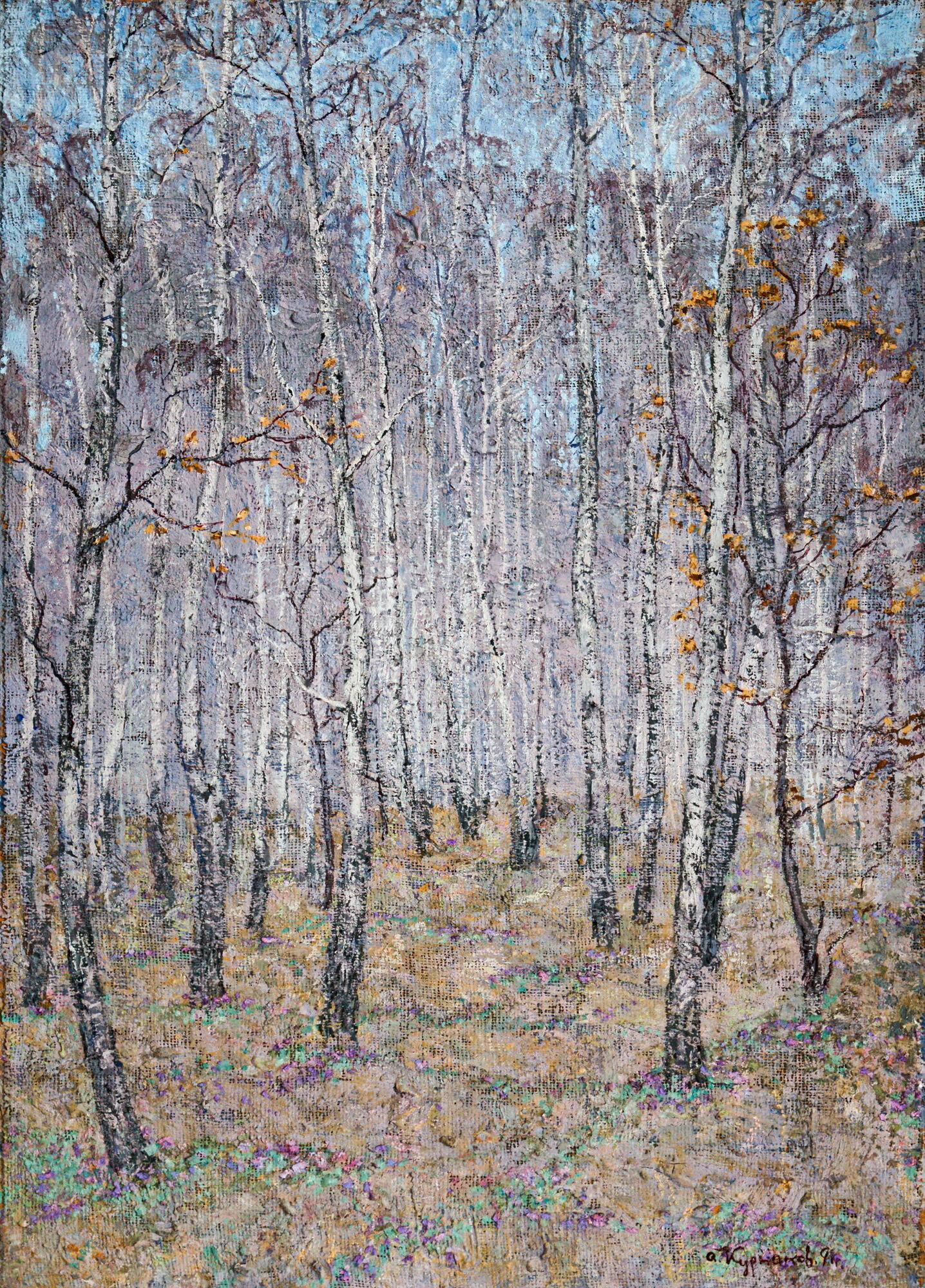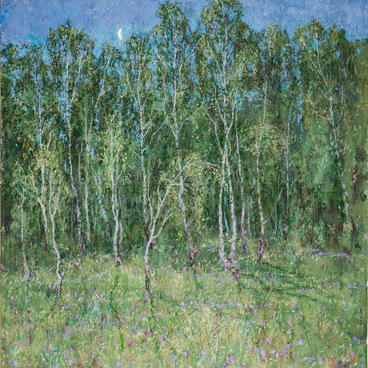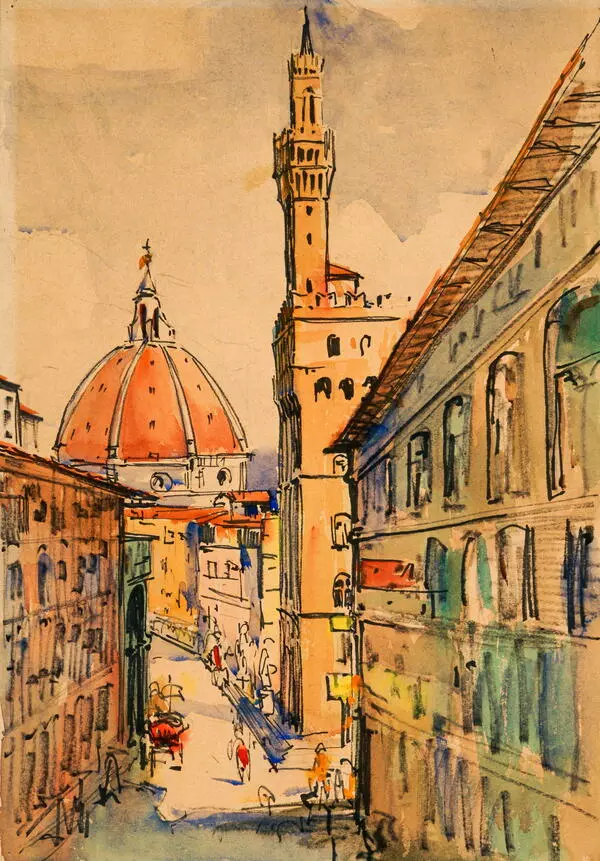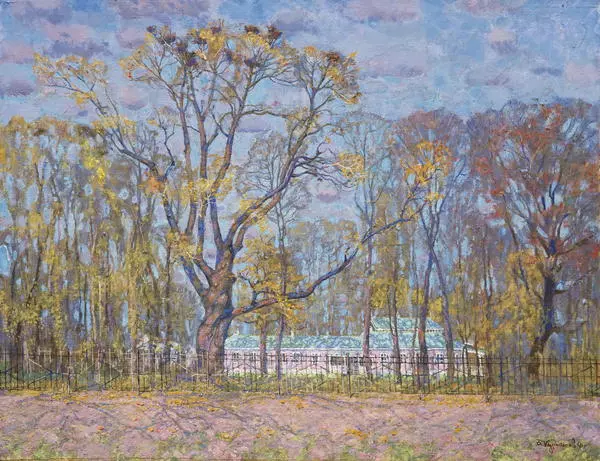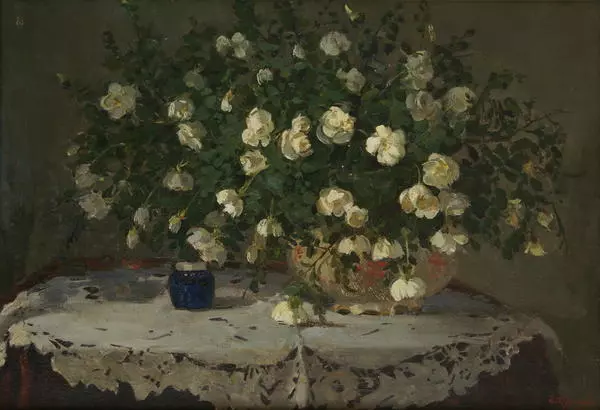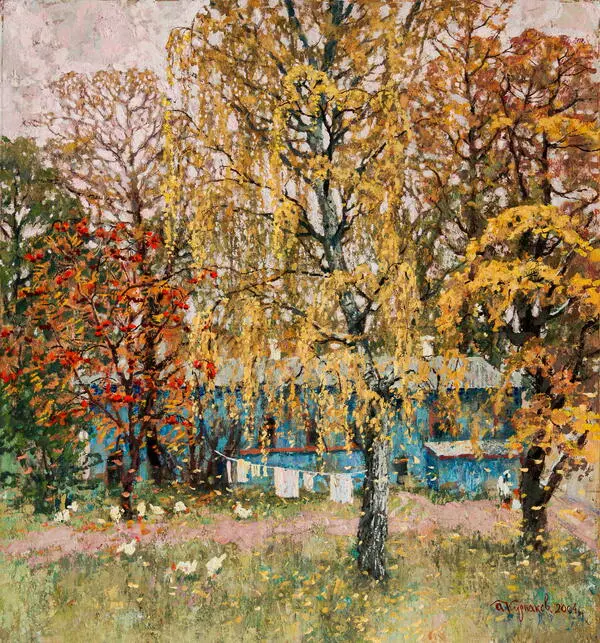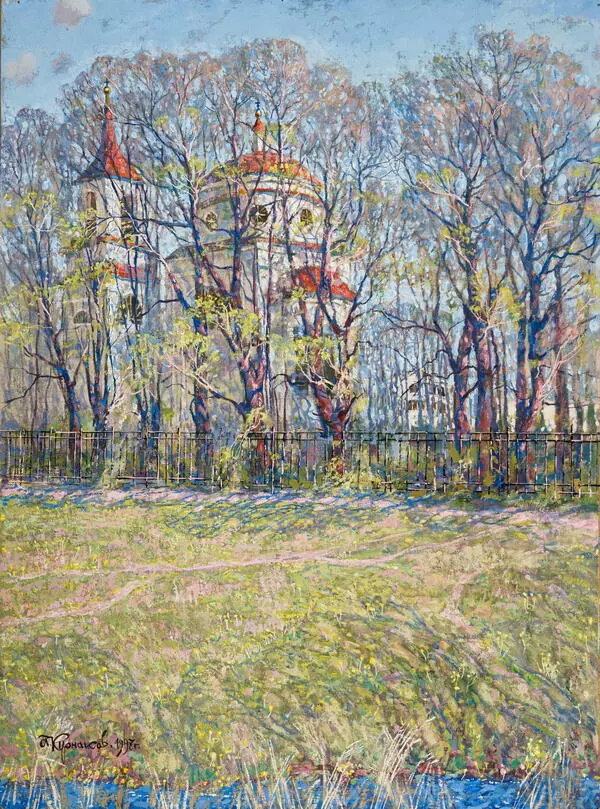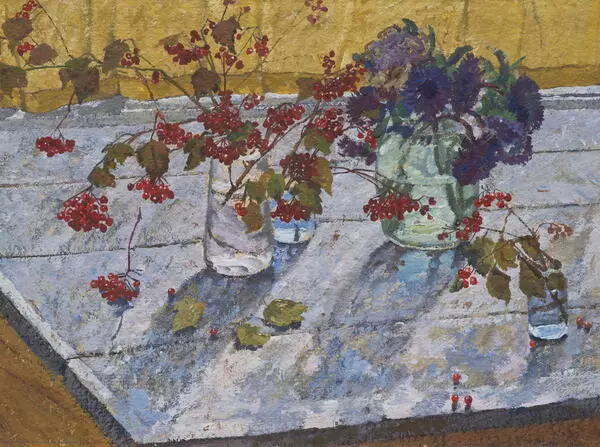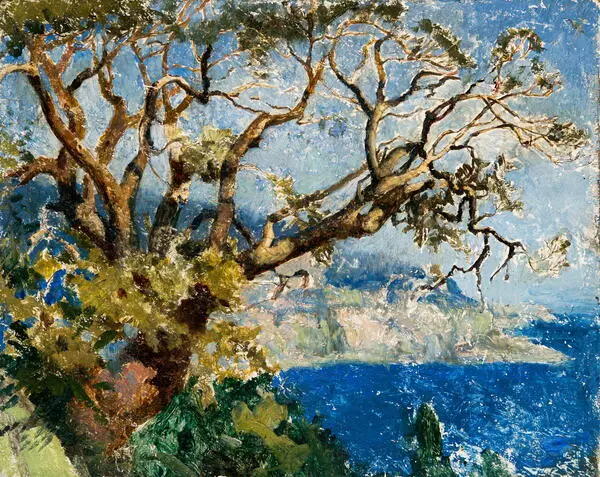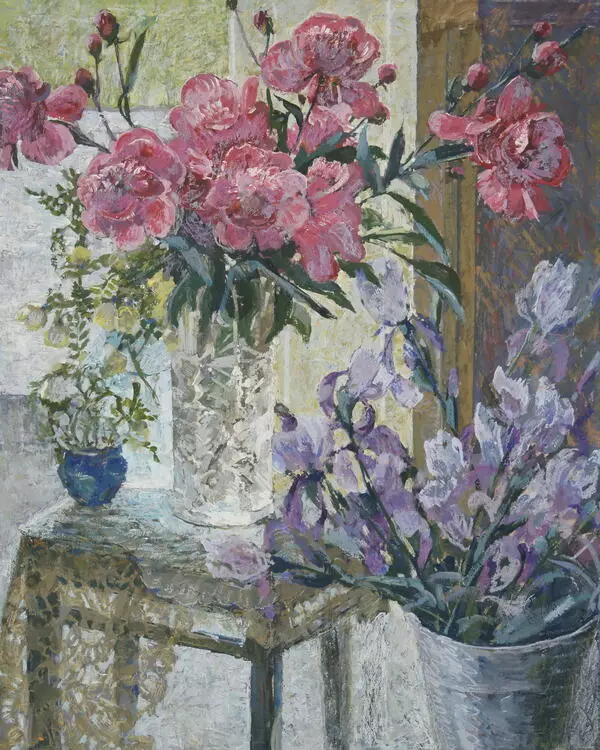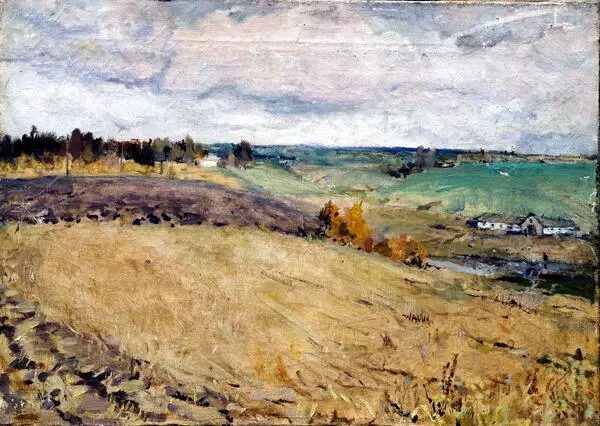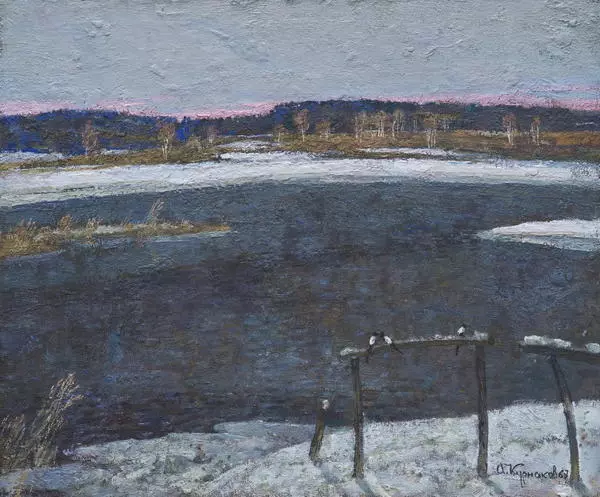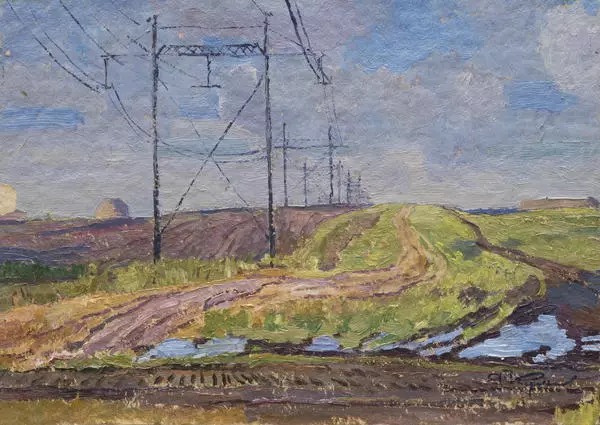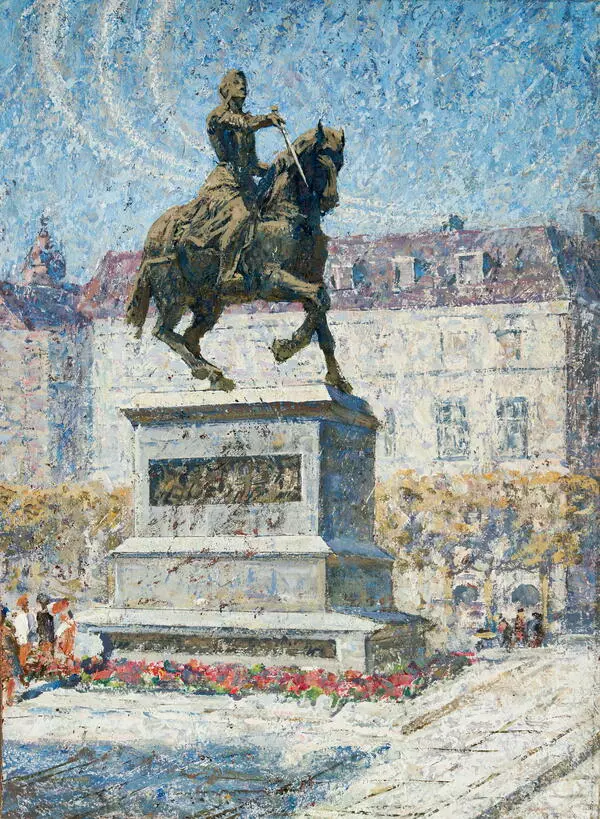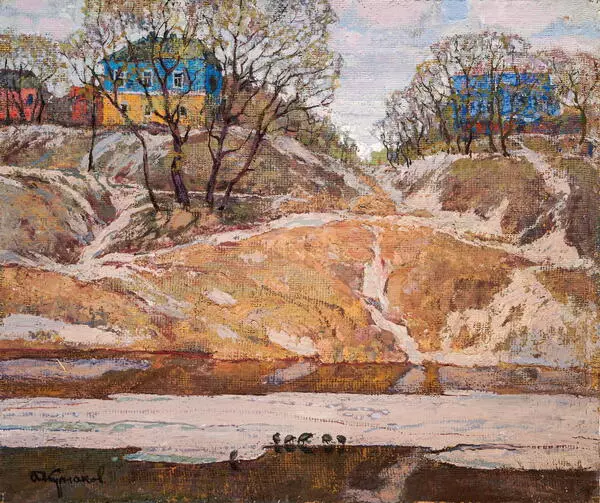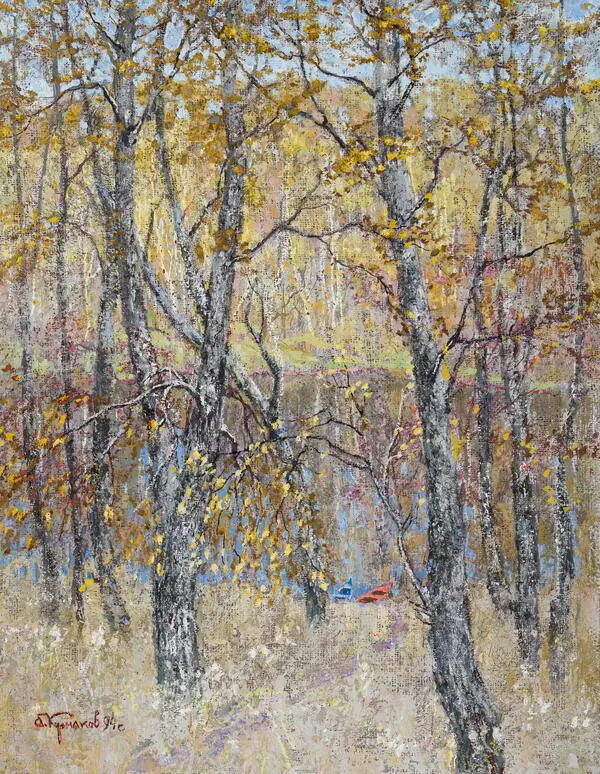Landscapes of the Oryol artist Andrey Kurnakov create a harmonious and sublime image and set an epic narrative. His work “Birch Calico” is a good example of that.
Being one of his numerous works on the same subject, the painting on display celebrates the beauty of the Spasskoye-Lutovinovo estate and its surroundings. This land has inspired many creators — from writers to painters. No wonder the eminent countryman of Kurnakov — Ivan Turgenev, who lived in the Spasskoye estate until the age of nine and then repeatedly visited afterward — mentioned his beloved village in his works.
The sight of Kurnakov’s picture conjures up images of the birch grove described by Ivan Turgenev in his story “The Appointment”. The grove, illuminated by the sun, “suddenly lit up entirely as if it was smiling: the thin trunks of a few birches took on a gentle glow of white silk, the small leaves lying on the ground became imbued with color, glittering like pure gold…”
Kurnakov adored the Spasskoye birches. He painted them more than once — in cold and hot weather, in fall and spring. Birch is the artist’s favorite tree; it is the main character in many of his lyrical landscapes. This choice can also be explained by the fact that this tree has always been perceived as a symbol of homeland and youth in Russian culture. In this painting, the birch embodies the poetical image of the Fatherland.
At the same time, the name “Birch Calico” seems to downplay the solemn nature of this symbol and endows the work with simplicity, national character, and lyricism. In the 19th century, machine production was developing quickly, and calico, which was once as expensive as Chinese silk, became quite affordable. The fabric became widespread in every social stratum, and dresses made from it even found their way into villages.
The artist paints his homeland nature with tender feelings. The canvas on display depicts a sunny autumn day. The high blue sky is seen through the trees and projects a slightly purple shade onto the white trunks. The depths of the grove are enveloped in a light haze. Some birch trees still have their foliage, enlivening the foreground with small golden spots. The ground is strewn with patches of green grass and late-blooming violets. The tree crowns barely tremble in the wind.
Kurnakov loved experimenting with various media and techniques. In the 1990s, he added coarse burlap to his works. He interwove the material with every meticulous stroke of paint to make the image look more three-dimensional. This technique creates an impression of the trunks being rough to the touch.
Being one of his numerous works on the same subject, the painting on display celebrates the beauty of the Spasskoye-Lutovinovo estate and its surroundings. This land has inspired many creators — from writers to painters. No wonder the eminent countryman of Kurnakov — Ivan Turgenev, who lived in the Spasskoye estate until the age of nine and then repeatedly visited afterward — mentioned his beloved village in his works.
The sight of Kurnakov’s picture conjures up images of the birch grove described by Ivan Turgenev in his story “The Appointment”. The grove, illuminated by the sun, “suddenly lit up entirely as if it was smiling: the thin trunks of a few birches took on a gentle glow of white silk, the small leaves lying on the ground became imbued with color, glittering like pure gold…”
Kurnakov adored the Spasskoye birches. He painted them more than once — in cold and hot weather, in fall and spring. Birch is the artist’s favorite tree; it is the main character in many of his lyrical landscapes. This choice can also be explained by the fact that this tree has always been perceived as a symbol of homeland and youth in Russian culture. In this painting, the birch embodies the poetical image of the Fatherland.
At the same time, the name “Birch Calico” seems to downplay the solemn nature of this symbol and endows the work with simplicity, national character, and lyricism. In the 19th century, machine production was developing quickly, and calico, which was once as expensive as Chinese silk, became quite affordable. The fabric became widespread in every social stratum, and dresses made from it even found their way into villages.
The artist paints his homeland nature with tender feelings. The canvas on display depicts a sunny autumn day. The high blue sky is seen through the trees and projects a slightly purple shade onto the white trunks. The depths of the grove are enveloped in a light haze. Some birch trees still have their foliage, enlivening the foreground with small golden spots. The ground is strewn with patches of green grass and late-blooming violets. The tree crowns barely tremble in the wind.
Kurnakov loved experimenting with various media and techniques. In the 1990s, he added coarse burlap to his works. He interwove the material with every meticulous stroke of paint to make the image look more three-dimensional. This technique creates an impression of the trunks being rough to the touch.
